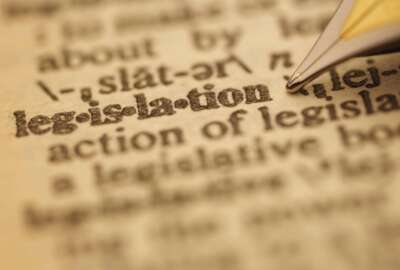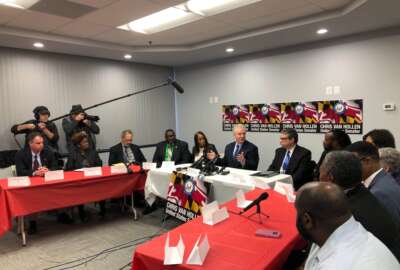
TSP, lawmakers eye further financial hardship flexibilities for feds ahead of future shutdowns
The agency that administers the Thrift Savings Plan said there may be a legislative movement building in Congress to allow federal employees more flexibility to...
A bipartisan, bicameral group of lawmakers are interested in finding new financial flexibilities for federal employees during future, prolonged government shutdowns.
Several members of Congress introduced a variety of new bills over the course of the recent government shutdown with the same goal. They want federal employees of all ages to be able to withdraw funds from their own Thrift Savings Plan accounts during future lapses in appropriations, which lawmakers say should be considered instances of “financial hardship.”
Under current regulations, TSP participants who take a hardship withdrawal from their accounts before the age of 59-and-a-half may incur a 10 percent early withdrawal penalty tax.
Still, the Federal Retirement Thrift Investment Board, the agency that administers the TSP, said it saw more signs of financial distress from its participants during the government shutdown.
From Dec. 26 to present, loans went up 5 percent and hardship withdrawals went up 26 percent compared to the previous year’s data, according to the FRTIB.
Though lawmakers introduced legislation as the recent government shutdown dragged on for weeks the FRTIB sees an opportunity to perhaps expand the agency’s current regulations.
Kim Weaver, director of external affairs for the FRTIB, said she was pleased with how engaged congressional staffers were on the topic. The agency spent much of the government shutdown reviewing legislative language for a variety of new bills from members of Congress.
Reps. Pete Olson (R-Texas), Don Beyer (D-Va.) and Ed Perlmutter (D-Colo.) have introduced the Financial Relief for Feds Act. It would let federal employees withdraw up to $4,000 from their TSP accounts every 14 days during a government shutdown — without incurring the typical 10 percent early withdrawal penalty.
This bill in particular, Weaver said, appears to have traction and movement on Capitol Hill.
“It’s bipartisan,” she said Monday at the FRTIB’s monthly meeting. “There’s some interest in trying to make sure that the panic that affected employees felt is addressed permanently.”
Sen. Tim Kaine (D-Va.), along with Sens. Ron Wyden (D-Ore.), Patty Murray (D-Wash.) and Susan Collins (R-Maine), have also introduced a bill that specifically describes a government shutdown as a “financial hardship.”
The Emergency Relief for Federal Workers Act would allow federal employees to withdraw up to $30,000 from their TSP accounts during a government shutdown and eliminate the need for employees to prove financial hardship during a lapse.
Specifically, the bill eliminated the 10 percent penalty for TSP participants who withdraw early. Employees who take a qualified shutdown distribution would re-contribute some or all of the previous withdrawal within 120 days of the end of a government shutdown.
In addition, Rep. Elaine Luria’s (D-Va.) bill, the Shutdown Relief Act, similarly lets federal employees take a hardship loan without penalty if they’re younger than 59-and-a-half-years-old at the time of the government shutdown. Luria’s legislation permits TSP participants to withdraw up to the total amount of their lost salaries during a shutdown. Employees have 180 days to recontribute the withdrawn amount back to their TSP accounts.
Rep. Mark Meadows (R-N.C.) also introduced legislation with a similar concept, but the bill would have only applied to the most recent government shutdown, not all future ones.
While Weaver said the FRTIB supports the basic outcomes of these bills — that impacted employees could find some sort of more immediate financial stability during a prolonged government shutdown — the agency said the proposed legislation could be tweaked.
The TSP isn’t a checking account; it’s a 401(k) style retirement savings and investment option designed to help federal employees live well-past their departures from the workplace.
Congress too may have other options to give federal employees the kind of financial flexibilities they’re considering ahead of future government shutdowns.
The TSP already has certain flexibilities it can extend to federal employees who are impacted by a presidentially-declared natural disaster. This past fall, the FRTIB announced it would qualify financial hardship withdrawal in-service requests from federal employees affected by Hurricanes Michael and Florence as a simple hardship withdrawal. It also waived the rule that typically prohibits participants from making contributions to their TSP accounts six months after taking a hardship withdrawal.
Those rules could be extended, for example, to federal employees in financial need during particularly prolonged government shutdowns.
In fact, the FRTIB will no longer ban participants from contributing to their accounts for six months after taking a hardship withdrawal under the TSP’s upcoming withdrawal changes. The agency’s timeline to fully implement those changes is still planned for mid-September.
Weaver said Congress has been open to the FRTIB’s recommendations, and staffers are considering whether they’ll simply amend the Olson bill to mimic the TSP regulations on hardship withdrawals for natural disasters.
Still, the FRTIB is pleased with the legislative movement that appears to building behind the TSP.
“The staff … has been very open to making sure we have something that we can implement,” Weaver said.
Copyright © 2024 Federal News Network. All rights reserved. This website is not intended for users located within the European Economic Area.
Nicole Ogrysko is a reporter for Federal News Network focusing on the federal workforce and federal pay and benefits.
Follow @nogryskoWFED
Related Stories

Government shutdowns: Once ‘incomprehensible, inconceivable, unthinkable,’ now the norm





